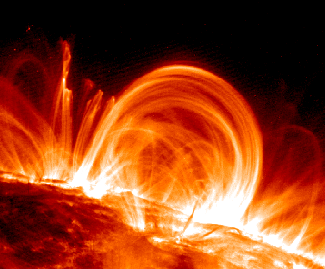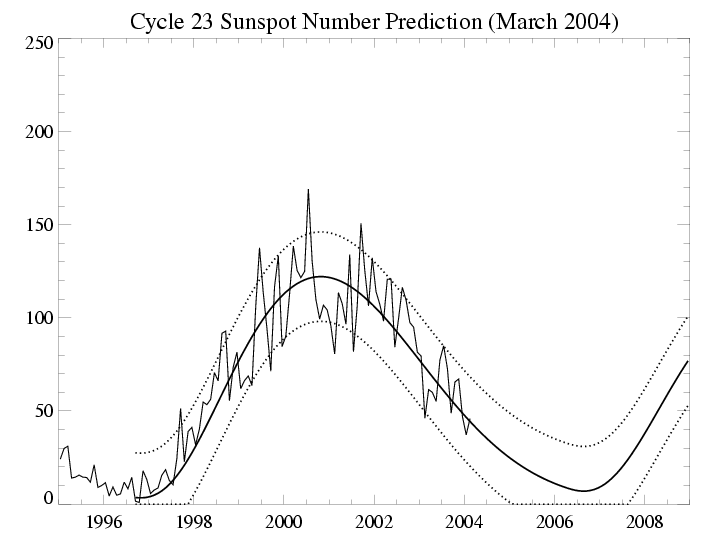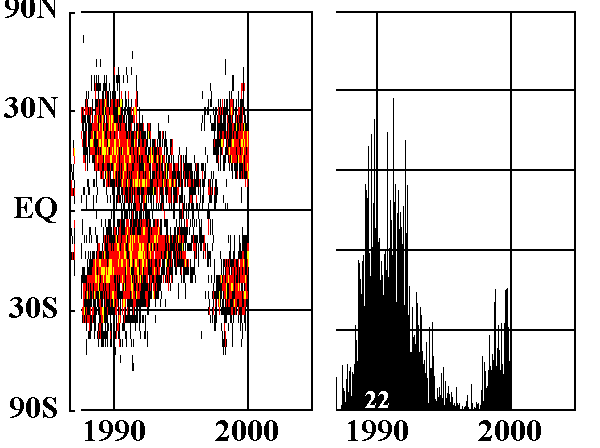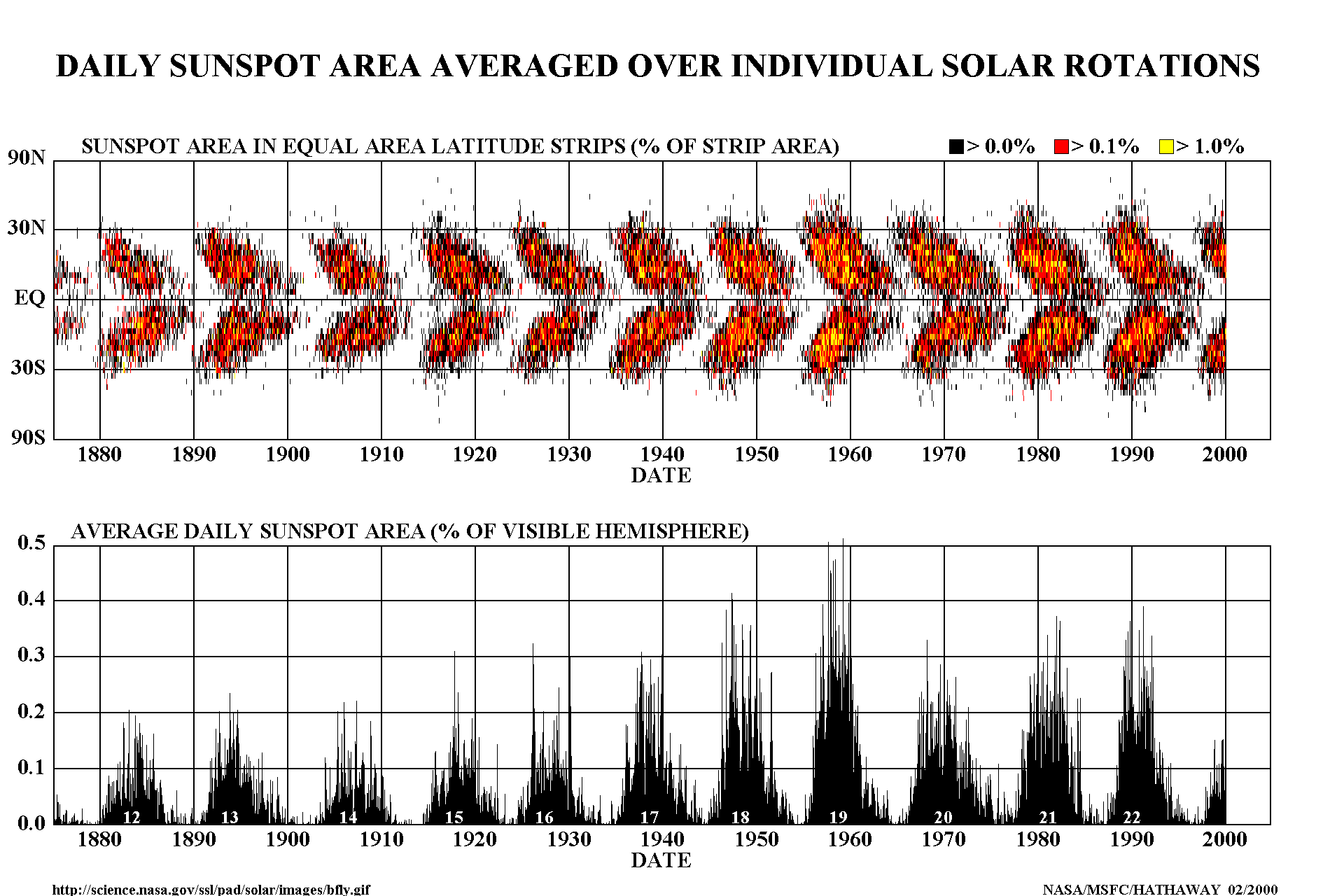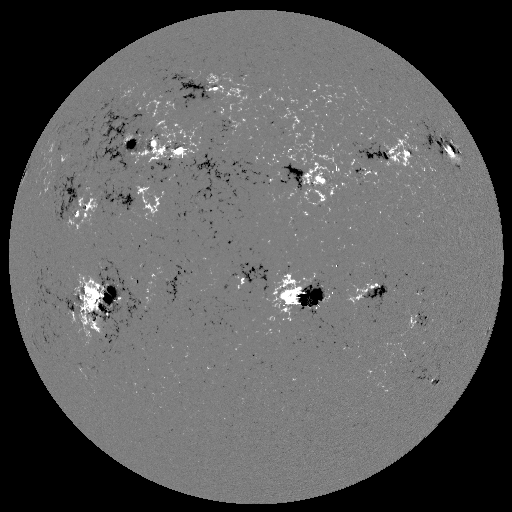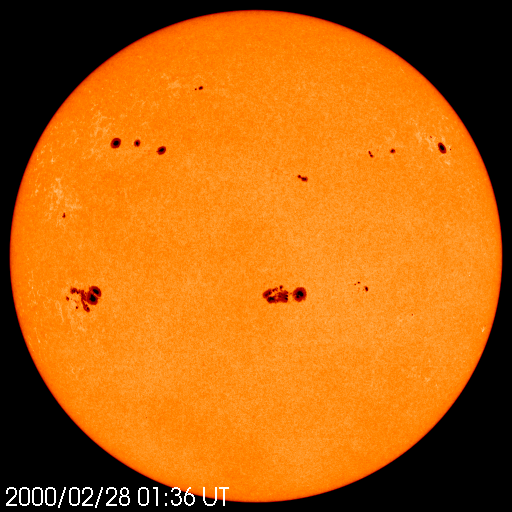Up to now, we have
described the Sun as a ball of gas, or plasma, but we have not said much
about its magnetic fields. We could sort of get away with that when
we talked about the interior and surface of the Sun, because there the
gas energy dominates the magnetic field, pushes it around, and concentrates
it in small bundles. This is what makes the sunspots. Below
is a close-up image of the sun in visible light, showing these little bundles
of magnetic field -- you can also see the photospheric granulation, which
sort of looks like the pile of a rug. The sunspots are dark, as we
said in the previous lecture, because the magnetic fields in the sunspot
inhibit the flow of heat into them, so they are cooler (at 4,000 K) than
the surrounding photosphere (which is at 6,000 K).
 Notice that the biggest sunspot
in the lower right (it is 3-4 times the size of Earth across) has a dark
part, called the umbra, and a lighter part called the penumbra. Think
of the magnetic fields as a bundle of ropes all gathered together, so that
when we look down on a sunspot we see a cross-section of them. In
the penumbra the rope strands are lying nearly flat, which is what makes
the striation pattern. In the middle of the sunspot, these magnetic
rope strands stick out of the surface.
Notice that the biggest sunspot
in the lower right (it is 3-4 times the size of Earth across) has a dark
part, called the umbra, and a lighter part called the penumbra. Think
of the magnetic fields as a bundle of ropes all gathered together, so that
when we look down on a sunspot we see a cross-section of them. In
the penumbra the rope strands are lying nearly flat, which is what makes
the striation pattern. In the middle of the sunspot, these magnetic
rope strands stick out of the surface.
Above the visible surface
(the photosphere) of the Sun, the gas (or plasma) still exists, but is
much less dense. In these regions above the surface (the chromosphere,
corona, and solar wind), the magnetic field energy dominates the gas energy,
and it is the magnetic field that is "king." It gets to tell the
gas where to go. That is why, when we look at a picture of the corona,
we see loops -- these are the strands of magnetic field that come out of
the surface, arch through the corona, and usually come back down to the
surface.

